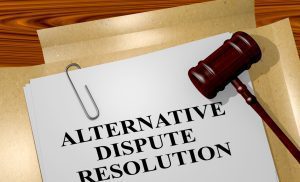Introduction
This is a question that I am asked more and more often, can we install separate meters in a Sectional Title scheme? In a previous article, I discussed a scenario where changing the effect of the participation quota (“PQ”) would have the effect of dividing the expenses of a scheme more equitably and proportionately amongst the owners. The scenario I used as an example was as follows:
“Let us use the example where a scheme is a mixed-use with the top floors being residential, and the ground floor units being commercial. It may be that these commercial units are not large, and do not have a large PQ value as a result. However, it could be that one of the commercial units operates as a laundromat.”
Why is this scenario problematic?
The water and electricity usage in a commercial unit that operates as a laundromat would be high, and if the levy contributions are collected based on the PQ, it could result in the division of the expenses of the scheme not being done on an equitable and/or proportionate basis. Where the amount paid for water and electricity consumption is directly linked to the size (or floor area) of an owner’s section, and not to the actual usage of water and electricity within the section, it could result in residential owners subsidising these expenses
What options are available to the body corporate in these circumstances?
The first option that I discussed in a previous article was for the body corporate to employ the services of a specialist sectional title attorney to draft a rule in terms of section 10 of the STSM Act that alters the effect of the PQ such that expenses are more equitably and proportionately divided. The second option available to the body corporate would be for the installation of separate meters. The third option available to the body corporate would be for the installation of separate pre-payment meters.
What does the legislation require?
Separate meters in a Sectional Title Scheme
In terms of Prescribed Management Rule (“PMR”) 29(3) a body corporate must, if so directed by a resolution of members:
(a) install and maintain separate meters to measure the supply of electricity, water, gas, or the supply of any other service to each member’s sections and exclusive use areas and the common property; and
(b) recover from members the cost of such supplies to sections and exclusive use areas based on the metered supply.
It is important to note that the body corporate will need to install separate meters for the common property areas such as CCTV cameras, outdoor lights, security gates, and garden sprinklers and taps. The division of such metered expenses can then be done based on the PQ.
Separate pre-payment meters
In terms of PMR 29(4) a body corporate may, on the authority of a special resolution, install separate pre-payment meters on the common property to control the supply of water or electricity to a section or exclusive use area. In these circumstances, all members and occupiers of sections must be given at least sixty (60) days notice of the proposed resolution with details of:
- all costs associated with the installation of the pre-payment system; and
- its estimated effect on the cost of the services over the next three years.
In terms of PMR 29(5) if such a pre-payment system is installed:
(a) the body corporate is responsible to ensure that the system does not infringe on the constitutional rights of section occupiers to access basic services; and
(b) any member who leases a unit to a tenant is responsible for ensuring that the system does not infringe the rights of the tenant in terms of the Rental Housing Act, 1999 (Act No. 50 of 1999), or any other law.
Conclusion
The pre-payment meter option provides a mechanism whereby the consumption of water or electricity services is separately metered and the expenses, therefore, are directly allocated to the owner of the section. This has the benefit of providing a solution for non-payers of these service fees. The drawbacks to this option are as follows:
- It requires a special resolution to authorise as opposed to the ordinary resolution required to authorise separate meters in terms of PMR 29(3).
- The process to authorise the installation is more complicated and time-consuming as at least sixty (60) days notice of the proposed resolution needs to be sent to all the members with details of all costs associated with the installation of the pre-payment system and its estimated effect on the cost of the services over the next three years.
- The installation of the pre-payment system for the scheme may be expensive as it would require extensive re-wiring and re-plumbing.
- Furthermore, the body corporate would need to consider that there would be service fees charged by third-party vendors who supply the pre-payment facilities and software.
- The body corporate need to keep in mind that the 6-kilo litres of free water that the local municipality provides for each household will need to be allocated into each meter such that the body corporate ensures that the pre-payment system does not infringe on any owner’s Constitutional right of access to water.
- All members who lease their units to tenants are responsible for ensuring that the system does not infringe on the rights of the tenant in terms of the Rental Housing Act, or any other law.
- Finally the body corporate will need to consider that they are not entitled to cut water or electricity off for non-payment of levies as they are not the supplier (the local municipality and ESKOM or City Power are the supplier). To do so amounts to an illegal act of spoliation.
It is for the abovementioned reasons that I suggest bodies corporate install separate water and electricity meters as the most viable option for the accurate allocation of water and electricity expenses on a more equitable and proportionate basis.













